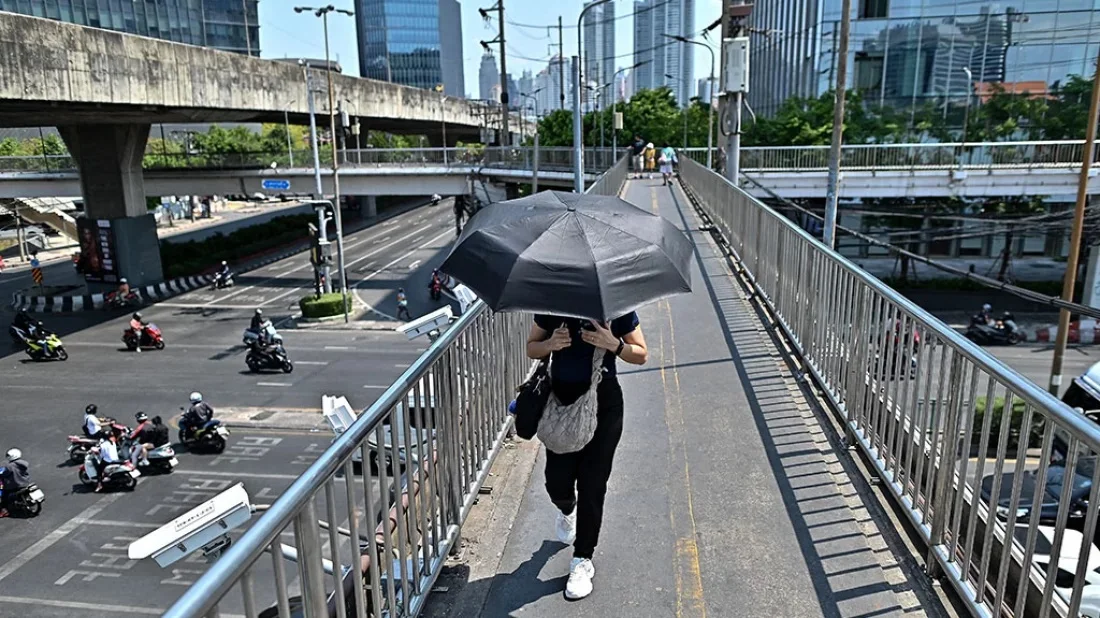Temperatures smash records 12 months in a row
Share on:

Globally, rising heat is causing hundreds of deaths, displacing communities
Every month over the past year has seen temperatures break previous records, in what the director of the European Union's Copernicus Climate Change Service (C3S) calls a "shocking" 12-month streak.
Temperatures in May broke records for the 12th month in a row, reaching 1.52°C above preindustrial levels, according to C3S data released on Wednesday. that marks the 11th month that temperatures have climbed beyond 1.5°C above preindustrial levels.
"While this sequence of record-breaking months will eventually be interrupted, the overall signature of climate change remains and there is no sign in sight of a change in such a trend," C3S director Carlo Buontempo said in the report.
In 2015, governments agreed to limit global warming to well below 2°C above preindustrial levels, while pursuing efforts to limit the temperature increase to 1.5°C as part of the Paris Climate Agreement.
Average global temperatures over the past 12 months reached 1.63°C above levels measured from 1850 to 1900, before industrialization. However, it does not mean the 1.5 limit is broken – average temperatures are measured over decades rather than individual years. So far, the global average temperatures rise is estimated to be 1.2 - 1.3°C.
Human-driven warming
The year 2023 was the hottest on record, with temperatures fueled by climate change, which is driven by the burning of fossil fuels such as coal, oil and gas, but also influenced by the naturally occurring El Nino phenomenon, which typically increases temperatures.
Still, the UN's World Meteorological Organization said in a report, also released on Wednesday, that at least one year would likely exceed 1.5°C above preindustrial levels by 2028.
"For the past year, every turn of the calendar has turned up the heat. Our planet is trying to tell us something, but we don't seem to be listening," UN Secretary-General Antonio Guterres said. "In the case of climate, we are not the dinosaurs, we are the meteor. We are not only in danger, we are the danger. But we are also the solution."
Global warming is leading to more extreme weather patterns, with climate change linked to longer and hotter heat waves, heavier rainfall in some places, and the conditions driving droughts and wildfires in others.
In India, recent weeks have seen unrelenting heat waves, with temperatures soaring to about 50°C in some parts, killing at least 50 people, causing a spike in heat strokes, and forcing several schools to close across the country.
That has particularly had an impact on the informal labor sector, which constitutes about 90% of the workforce in India. Front-line workers, laborers and farmers often have no access to cooling systems such as air conditioning, and are unable to avoid the extreme heat, Avantika Goswami, the program manager on climate change at India's Centre for Science and Environment, told DW.
"They are absolutely exposed to the elements," she said. "Heat stress is not just a huge productivity challenge in terms of workforce and the consequent economic impacts, but also a huge public health crisis."
Most-vulnerable populations affected
In Rio Grande do Sul, Brazil, rainfall was estimated to be twice as likely and up to 6% heavier as a result of global warming, according to climate attribution scientists, who study the links between extreme weather and climate change.
The rainfall led to severe flooding, which affected an area the size of the United Kingdom, and displaced about 600,000 people.
But it is the most vulnerable – older people, those with disabilities, and children – who are most at risk of the consequences of climate change.
According to Save the Children International, about 1.2 billion children are estimated to be living in areas highly sensitive to climate change. People younger than 5 years old are most at risk, Revati Phalkey, the global director for health and nutrition at Save the Children International, told DW.
"Children born now will be exposed to more frequent, more intense and more severe extreme weather events," she said. "Very young children have limited capacity to regulate their body temperatures, and that is what causes heat stress more often in them because they are not able to cope as well as adults can."
International climate action
More than 6,000 delegates are currently taking part in climate talks in Bonn, Germany, to set the groundwork for a new finance goal that is due to be decided at the COP 29 summit in Baku, Azerbaijan, later this year.
Developing countries, which have contributed the least to climate change, disproportionately face the biggest impacts. Governments in these nations are calling for more money to enable them to reduce their carbon dioxide emissions, but also to help communities cope with extreme weather events.
Speaking at the conference, Goswami, who lives in New Delhi and has personally experienced the high temperatures there, said there was little understanding in industrialized countries of the scale of the impacts that people are experiencing.
"There's a collective inertia born from this inability to understand how there is a very direct link between their past and present actions and the suffering we are going through today," she said.
As well as calling for an increase in funding, Goswami said, there needs to be a complete phase out of fossil fuels, with the space for developing countries to transition gradually.
Though that would not stop temperatures rising in the short term, given the carbon dioxide concentrations already in the atmosphere, in the long term an end to the burning of fossil fuels is what it will take to prevent the worst impacts of climate change.
Source: DW

